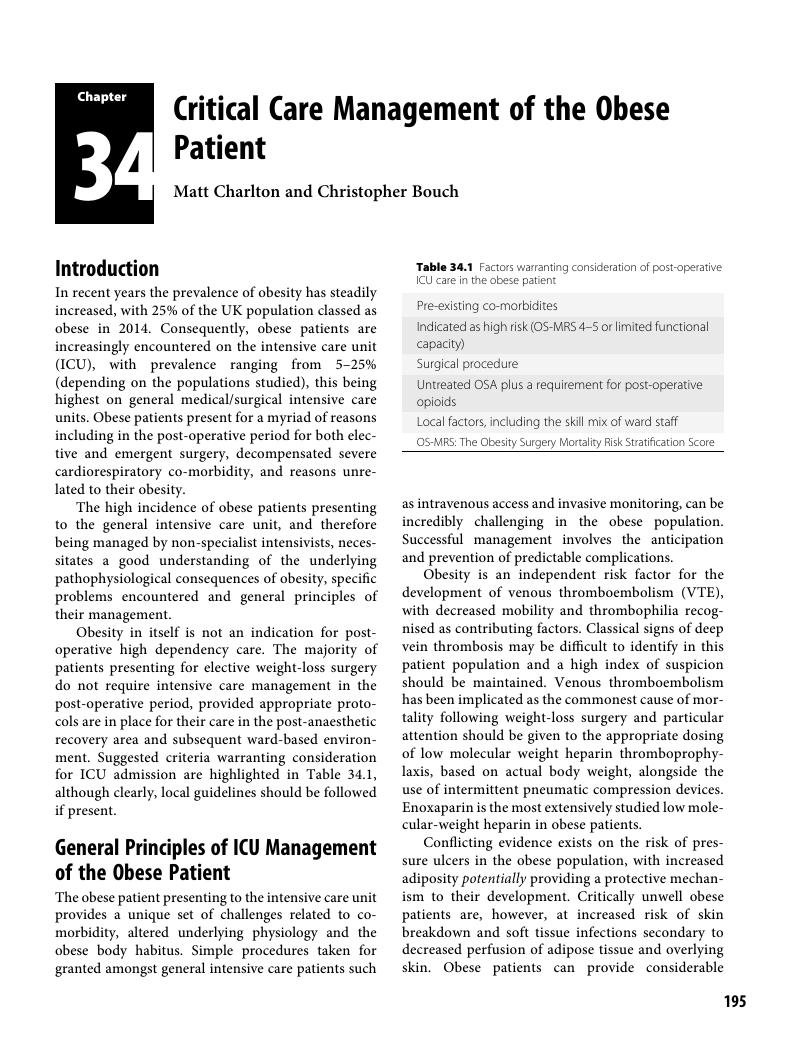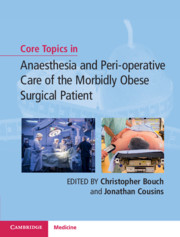Book contents
- Core Topics in Anaesthesia and Peri-operative Care of the Morbidly Obese Surgical Patient
- Core Topics in Anaesthesia and Peri-operative Care of the Morbidly Obese Surgical Patient
- Copyright page
- Contents
- Contributors
- Preface
- Abbreviations
- Section 1 Background to Obesity, Epidemiology and Anthropology
- Section 2 Pathophysiology of Obesity
- Section 3 Pre-operative Assessment and Preparation
- Section 4 Intra-operative Management
- Section 5 Post-operative Care
- Chapter 29 Post-operative Recovery: Location and Potential Complications
- Chapter 30 Enhanced Recovery for the Obese Patient
- Chapter 31 Thromboprophylaxis for the Obese Surgical Patient
- Chapter 32 Peri-operative Management of the Obese Diabetic Patient
- Chapter 33 Nutritional Management of the Obese Surgical Patient
- Chapter 34 Critical Care Management of the Obese Patient
- Section 6 Bariatric Surgery
- Index
- References
Chapter 34 - Critical Care Management of the Obese Patient
from Section 5 - Post-operative Care
Published online by Cambridge University Press: 24 September 2018
- Core Topics in Anaesthesia and Peri-operative Care of the Morbidly Obese Surgical Patient
- Core Topics in Anaesthesia and Peri-operative Care of the Morbidly Obese Surgical Patient
- Copyright page
- Contents
- Contributors
- Preface
- Abbreviations
- Section 1 Background to Obesity, Epidemiology and Anthropology
- Section 2 Pathophysiology of Obesity
- Section 3 Pre-operative Assessment and Preparation
- Section 4 Intra-operative Management
- Section 5 Post-operative Care
- Chapter 29 Post-operative Recovery: Location and Potential Complications
- Chapter 30 Enhanced Recovery for the Obese Patient
- Chapter 31 Thromboprophylaxis for the Obese Surgical Patient
- Chapter 32 Peri-operative Management of the Obese Diabetic Patient
- Chapter 33 Nutritional Management of the Obese Surgical Patient
- Chapter 34 Critical Care Management of the Obese Patient
- Section 6 Bariatric Surgery
- Index
- References
Summary

- Type
- Chapter
- Information
- Core Topics in Anaesthesia and Peri-operative Care of the Morbidly Obese Surgical Patient , pp. 195 - 200Publisher: Cambridge University PressPrint publication year: 2018



